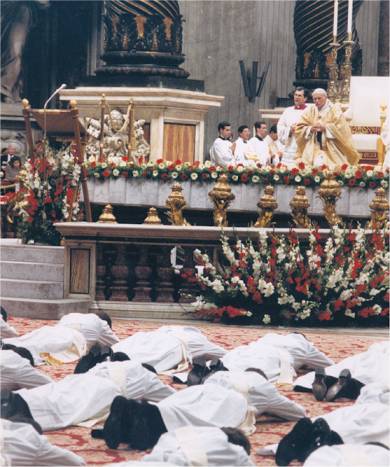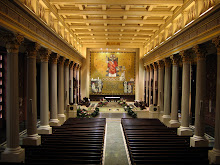Whilst I was away, the Telegraph ran my next article:
In my last column, the element of sacrifice in Jewish worship was discussed. As Catholics, we see the Old Testament illuminating and clarifying the New, but with the passage of time, we have lost some important details that give us a richer and deeper awareness of the mystery of Jesus coming to offer us the gift of salvation.
In the recent readings at Daily Mass, we have been hearing of the ‘Exodus Event,’ the journey of the people of Israel from slavery in Egypt to freedom in the Promised Land. The events which God leads the people through during this journey are perhaps the most vivid images that most Christians have of the Old Testament, and of all these events, none is more striking than the event which began the whole journey: the Passover. This is what founded the People of Israel as God’s Chosen People, and through Moses, the Passover was founded as a perpetual sacrifice to serve as a constant reminder of the special relationship God has with Israel.
While it is true that Seder meals, as an offshoot of Passover liturgy, continue to this very day, the elements of how the Passover was celebrated in the Jerusalem Temple have been lost to the annuls of history. But as we look back to how the Passover was celebrated in Jesus’ time, it gives us a much deeper appreciation of what He came to do, specifically His identity as the new Lamb of God, the spotless victim offered as a sacrifice for the people.
At the first Passover, each family sacrificed a spotless lamb and smeared the blood on the lintel so that the angel of death would ‘pass over’ their home and first born son. As Israel became established as a nation, this sacrifice was moved from the home to the Temple, for in the Temple, the Sacrifice became more liturgical, with associated prayers and rituals. In fact, one such ritual is vitally important for our study of Jesus as the New Passover: after the lamb for each family was killed, two wooden rods were inserted to assist in the roasting: one along the spine, the other through the ribs, from shoulder to shoulder. Each of these lambs, by the thousands, would be carried out of the Temple and to the homes of the people in and around Jerusalem. ‘Crucified lambs’ were being offered for the people.
As we turn the Gospel of John, all this symbolism comes crashing home, for John expressly mentions that while this was happening in the Temple, Jesus was being led with a Cross to Calvary. The One who had been identified as the Lamb of God by John the Baptist was fulfilling the mission He had been sent: here is the new Lamb of God, no longer offering something else, but offering himself as the new Sacrifice. This is no longer a sacrifice that must be continually re-presented in the Temple, for Jesus’ is the One Eternal Sacrifice, fulfilling what had been indicated in the Old, and restoring the gulf that had existed since the time of the Fall: only by submitting to death could God overcome death!
During this ‘Year for Priests,’ we are able to see in Jesus’ perfect sacrifice of praise before the Father that he is not just the sacrifice, but He is also the priest, the one who offers, as well as the altar upon which the Sacrifice is made. His Blood, which speaks more perfectly than the blood of a lamb, seals in us the cause of our salvation. Through the priests of today, we are able to not just see as witness this one perfect sacrifice, but we are able to re-enter this hymn of praise. As we assist at Mass in our prayers and offerings, we stand, as it were, at the very foot of the Cross with John and Mary. Let us praise God for this great gift of our salvation always and everywhere!
Subscribe to:
Post Comments (Atom)










No comments:
Post a Comment